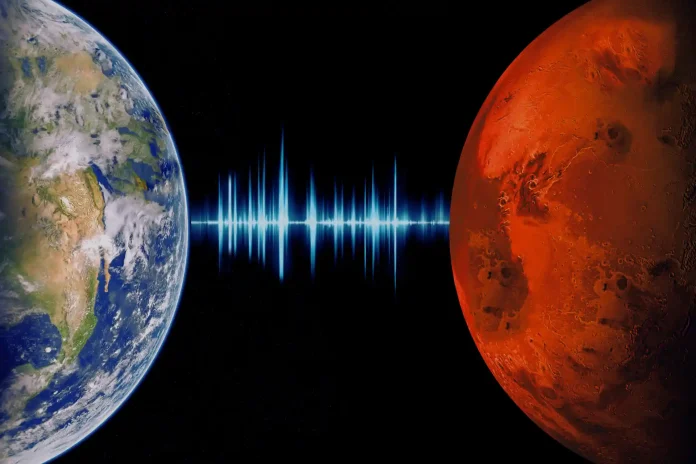Have you ever wondered how it would sound to stand on the surface of Mars? According to new research, the Martian atmosphere is far wilder than we previously imagined. This is because the speed of sound on Mars differs greatly according to location and temperature. These findings could have major consequences for future Mars missions, both manned and robotic.
Speed of Sound on Mars
NASA’s Perseverance rover has microphones that were initially designed to explore the characteristics of Martian materials. However, these microphones have detected a range of unusual sounds, including the ominous rumblings of dust storms. Scientists discovered that noises on Mars behave differently than on Earth. For example, low-pitched noises travel more slowly than high-pitched sounds. This is because the Martian atmosphere, which contains 95% carbon dioxide, absorbs some of the sound energy at lower frequencies.
Also! Travel Time to Mars From Earth!
To gain a better understanding of how sound travels on Mars, a group of scientists from France and the United States investigated how sound speed and attenuation (how sound decays with distance) act in the first 60 feet of the Martian atmosphere. They investigated how elements such as atmospheric pressure, temperature, and chemical composition influence sound waves. Because these factors change widely over the Martian surface and the course of the year (which is nearly twice as long as an Earth year), the team had to account for a wide range of situations. For example, temperatures in the polar regions can vary by more than 100 degrees Fahrenheit over the Martian seasons.
The study, published in the Journal of Geophysical Research: Planets, yielded some startling results. Unlike on Earth, where dust storms may block sound, dust on Mars appears to have minimal impact on sound propagation. Furthermore, the variation in sound speed with temperature is similar to Earth. On Mars, however, carbon dioxide levels have a great influence on sound speed and attenuation. Furthermore, the difference in sound speed between high and low frequencies is less noticeable at lower temperatures.
The most notable distinction between sound on Mars and Earth is the huge daily changes in temperature and, to a lesser extent, carbon dioxide concentration. Temperatures in the region where Perseverance is now exploring can fluctuate by up to 90 degrees Fahrenheit in a day. This means that sounds travel faster and fade away faster during the hottest hours of the day. Seasonal fluctuations in temperature and carbon dioxide also influence how sound travels across Mars, with the polar regions seeing the most pronounced effects.
Related! Mysterious White Rocks on Mars!
Benefits of the Model
The new model created by the researchers enables scientists to estimate attenuation and the speed of sound on Mars at any location, at any time of day or year. This will assist scientists in interpreting the noises captured by rovers such as Perseverance and determining the nature of their sources. The model can also provide useful information on what life would be like for future human inhabitants of Mars. For example, mornings on Martian mountaintops may be the most similar sensation to how sound behaves on Earth. In other locations and periods, such as afternoons at the Perseverance rover site, the sound will most likely be weird, with high-pitched noises coming first and distant sounds inaudible.



